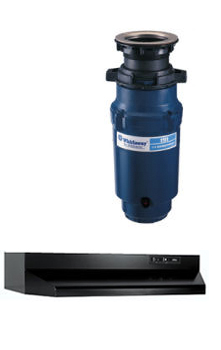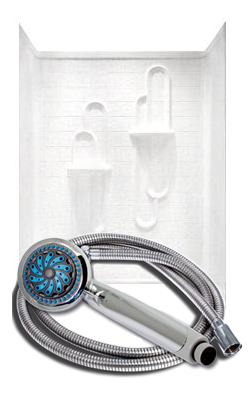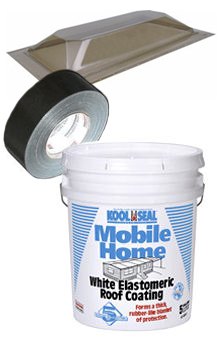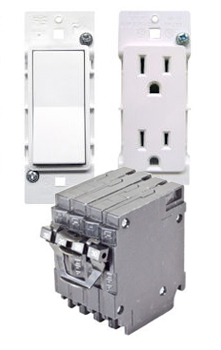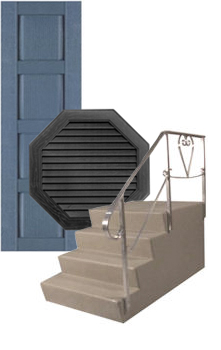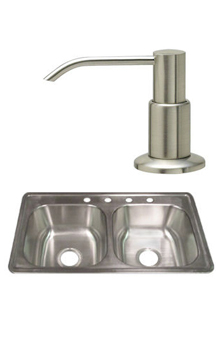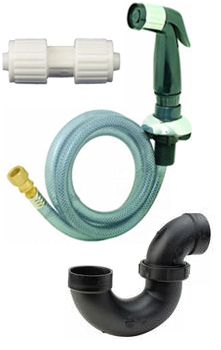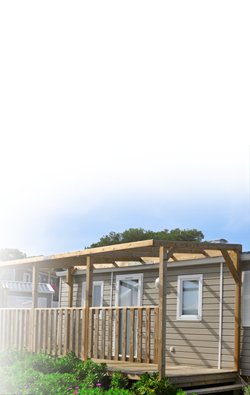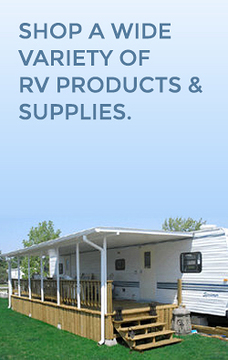
Checking the space under your mobile home might seem a little unsettling, but it’s important not to ignore it. Sooner or later, your bottom board will need your attention.
Suppose you’ve ever looked at a government pamphlet about fixing the underbelly of a mobile home. You might have noticed they don’t talk much about the cost in that case. Their advice usually boils down to ‘hire a professional.’ The problem is that most regular mobile homeowners have budgets, and we can’t always afford to bring in a pro whenever something needs fixing.
In this article, we will cover the importance of the underbelly of your mobile home and how to repair it.
What’s the Difference Between a Bottom Board and an Underbelly?
The words “bottom board” and “underbelly” can be puzzling because people use them interchangeably. When it comes to mobile homes, these terms have various names, including belly board, belly wrap, Shepherd’s board, rodent barrier, bottom wrap, bottom board, belly, belly barrier, and sometimes, complex in certain areas. So, what sets them apart?
Underbelly
The underbelly refers to the space covered by the belly wrap. It extends from the bottom of your subfloor or decking to the top of the belly board or black sheeting. This space includes the chassis, floor joists, insulation, HVAC venting, wiring, and plumbing.
Bottom Board
On the other hand, the belly board or belly wrap is a black material made from polyethylene or fiberglass sheeting. The belly board might look like black plastic, but it’s actually much stronger.
It is a protective layer beneath your mobile home, protecting against moisture and pests while aiding in energy efficiency. The belly board contains fabric and chemicals that deter animals. Yet, it allows proper airflow and circulation to prevent condensation, mold, and mildew.
What’s a Vapor Barrier?
A vapor barrier or moisture barrier is a plastic sheet placed on the ground too keep moisture from rising and entering your home. It can be any color, but clear and black are the most common.
Many mobile homeowners may not realize the importance of a vapor barrier. If your home doesn’t have one, it should be installed soon. According to HUD, the vapor barrier should extend at least 6 inches from the home’s perimeter. This not only helps prevent moisture but also reduces weed growth, protecting the skirting from damage caused by a weedeater.
However, suppose your mobile home is on a full concrete pad. In that case, it won’t need a vapor barrier since the concrete acts as a vapor barrier.
How Does a Bottom Board Get Damaged?
Damage to the belly board can occur for various reasons; however, it is commonly caused by animals, age, and people making repairs. That’s why it’s essential to ensure that anyone working on your home also fixes the belly board when done. However, this must be mentioned when discussing the job with them. Make sure they use the right materials to fix it properly. But why is belly board repair so necessary?
Consequences of a Damaged Bottom Board
A damaged belly board can lead to a cascade of problems for your mobile home. Some of the most significant issues include:
- Heating and Cooling Loss: Missing or damaged insulation will cause your mobile home to become susceptible to heat and cooling loss. This inefficiency can significantly impact your energy bills.
- Critter Access: Holes and gaps in the belly board provide direct access for pests. Once inside, they can wreak havoc on your home’s structure and pose health risks to occupants.
- Freezing Plumbing Lines: Without proper insulation, plumbing lines are more vulnerable to freezing in cold weather, potentially causing extensive damage and costly repairs.
- Moisture Damage: The absence of protection exposes floor joists and subflooring to moisture, leading to rot, decay, and structural instability.
Regular maintenance, proper installation, and prompt repairs in case of damage are essential to ensure the longevity and functionality of the belly board in a mobile home. If your belly boards have any tears or holes, they should be repaired immediately.
Repairing a Mobile Home Bottom Board

Photo courtesy of WV GOEO
Repairing or replacing a mobile home’s underbelly and belly board can be challenging. Working with such a large piece of material under the home can be tedious and frustrating. Still, it is possible with careful planning and assistance.
Here’s a step-by-step guide:
Before You Begin
1. Install the Vapor Barrier
Lay down a vapor barrier to protect you from getting nasty while under the home.
2. Assess the Damage
Before repairing, try to figure out what caused the damage. Inspect the entire underbelly thoroughly, including the chassis, floor joists, insulation, ductwork, and subfloor. Identify areas of damage, including holes, tears, or water stains.
Any plumbing or HVAC system repairs must be completed before repairing your belly board. For example, if moisture buildup caused the tear, locate and repair the source of the leak. Replace damaged insulation and flooring. If pests cause the problem, remove them and their nests.
3. Clean the Area
Remove any debris, dirt, or pests from the damaged section of the belly board.
Patching Holes in a Mobile Home Bottom Board
Small holes can be easily patched with a 2″ bottom board tape. To repair larger holes, you may need to cut out the damaged area and patch using a bottom board repair kit. The repair kit will have woven polyethylene to patch the hole and self-adhesive polyethylene to hold the patch in place.
Repairing Rips and Large Damaged Areas
Sometimes, you may have to cut out the damaged bottom board. Remove the damaged area back to the center of the nearest floor joist on each side of the cut-out. Replace with a self-adhesive bottom board large enough to cover the entire area. Using this product, you can overlay large areas with multiple tears and holes.
Replacing a Mobile Home Bottom Board
1. Remove the torn insulation
Cut out and remove the old insulation, leaving only the chassis, floor joists, HVAC ducts, plumbing pipes, and the subfloor.
2. Reseal or Replace the Ductwork
Replace or reseal the ductwork that the new belly board will cover. Make sure all the corners and seams have been taped together or replaced.
3. Install Insulation
Install new insulation with batts, rolls, or foam board.
4. Add the New Belly Board
After installing the insulation, you must replace the belly board enclosing the entire home.
5. Secure and Seal Pipes and Ductwork
Before wrapping the belly around the pipes and ductwork, it is crucial to ensure that they are well-insulated and not in contact with the ground. If ductwork is touching the ground use Flex Duct Hanger Strap to secure and raise them. After that, seal the belly wrap around the pipes, wires, and ductwork using a patching tape that works well.
6. Reinforce with a Vapor Barrier
The compromised vapor barrier needs to be replaced with a new, high-quality barrier. Ensure proper installation, overlapping seams, and securely fastening the barrier to prevent moisture penetration.
Mobile Home Bottom Boards
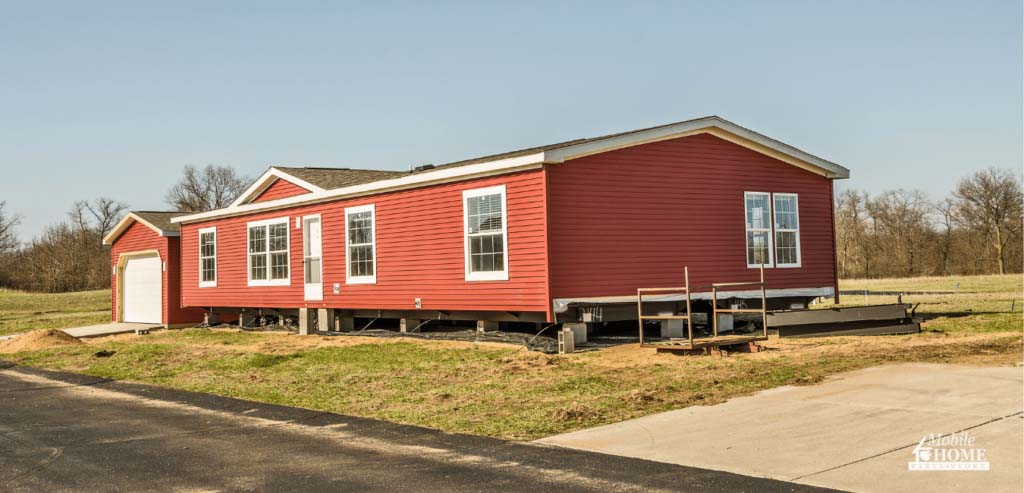
The underbelly of your mobile home plays a crucial role in its structural integrity and energy efficiency. Taking proactive steps, such as installing a vapor barrier and conducting regular inspections, can help prevent potential problems. Remember, maintaining a healthy belly board is not just about addressing existing issues but also about safeguarding the longevity of your mobile home.
That’s where Mobile Home Parts Store comes in as your trusted partner. We understand mobile homeowners’ unique challenges, and we’re here to provide you with the high-quality products you need for a successful repair.
Our selection of bottom board repair kits, tapes, and materials are designed to meet the specific demands of mobile home underbellies. From small patches to comprehensive replacements, our products are crafted with durability and ease of use in mind. We believe that maintaining your mobile home shouldn’t break the bank, so we offer cost-effective solutions without compromising on quality.
So, don’t neglect the space beneath your mobile home—give it the attention it deserves to secure a cozy and worry-free home for you and your family.
Tags: belly board, bottom board, Mobile Home Parts Store, mobile home repair, underbelly


